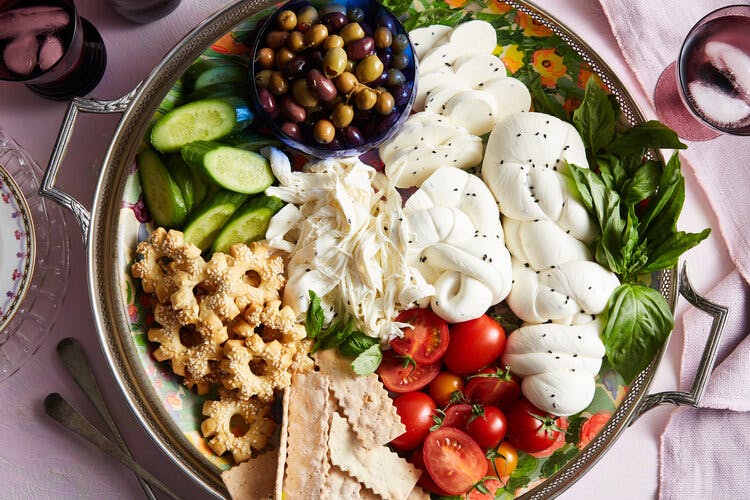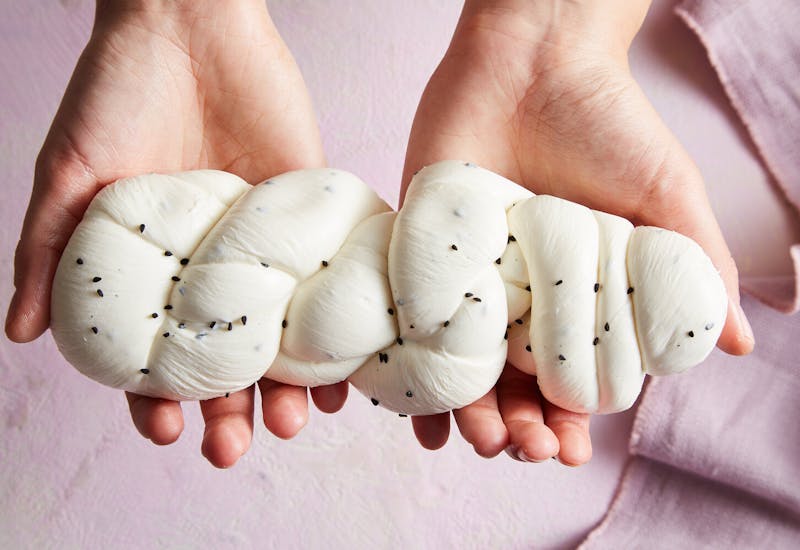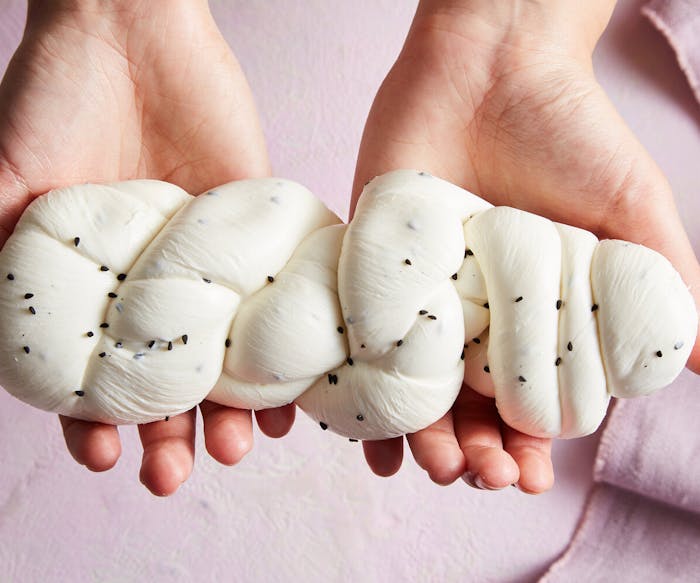In the 1930’s, looking for a place to live more comfortably as a Jewish family, Moselle Tobias’s grandmother moved over 7,500 miles from Aleppo, Syria to Mexico City. “A lot of Aleppo-born Jews at that time were moving to Mexico,” Moselle explains. While a small part of the family set down roots here, her mother Celia had other plans. Born in Mexico City, she left for New York when she was just a teenager looking to join the city’s Sephardic community and to marry, which she did in 1949.
Celia carried her community’s recipes and traditions from Aleppo with her to Brooklyn. Growing up, Moselle remembers her mother making traditional Syrian recipes like sambusak, or small cheese-filled pies, torpedo-shaped meatballs wrapped in bulgar also known as kibbeh, and stuffed vegetables. There were also customs like enjoying Syrian string cheese and ka’ak, or anise laced crackers.
Celia didn’t make the string cheese often, but she showed her daughter Moselle how to make it the traditional way. As an adult, Moselle would buy the cheese, but she’s since moved towards only serving foods she’s made from scratch in her home. Syrian string cheese was no exception. She asked her friend and sister-in-law to remind her of the technique and started to make it for herself and the extended family.
The cheese is so common in the family today, Moselle explains, they eat it “anytime we’re hungry…. When I serve it, I put it out for lunch. Sometimes I put it out before lunch. Sometimes we just snack on it.” It is always on hand.
By the time her granddaughter Florence was 16 and in high school, Moselle was a master of making the cheese. She taught a class at a Sephardic community center, sharing her cheese technique and asked Florence to help as her assistant. Once Florence got the hang of making the cheese, she started to make it at home, selling it to neighbors. “I realized no one else in the family does it, only my grandma,” Florence explains. She wanted to continue the tradition and to keep herself busy while finishing high school.
In the eight years since, she’s grown the operation into a business called Grandma’s Cheese. She sells her own version of her grandmother’s recipe at 10 stores in the New York area — even at markets where Moselle shops. “Very often I’m in a grocery store,” Moselle says. “And I hear someone say: ‘Where’s the Grandma’s Cheese?’ and I’m standing there and I find it very very funny…. I tell them: ‘Oh, I’m the grandma.’”




